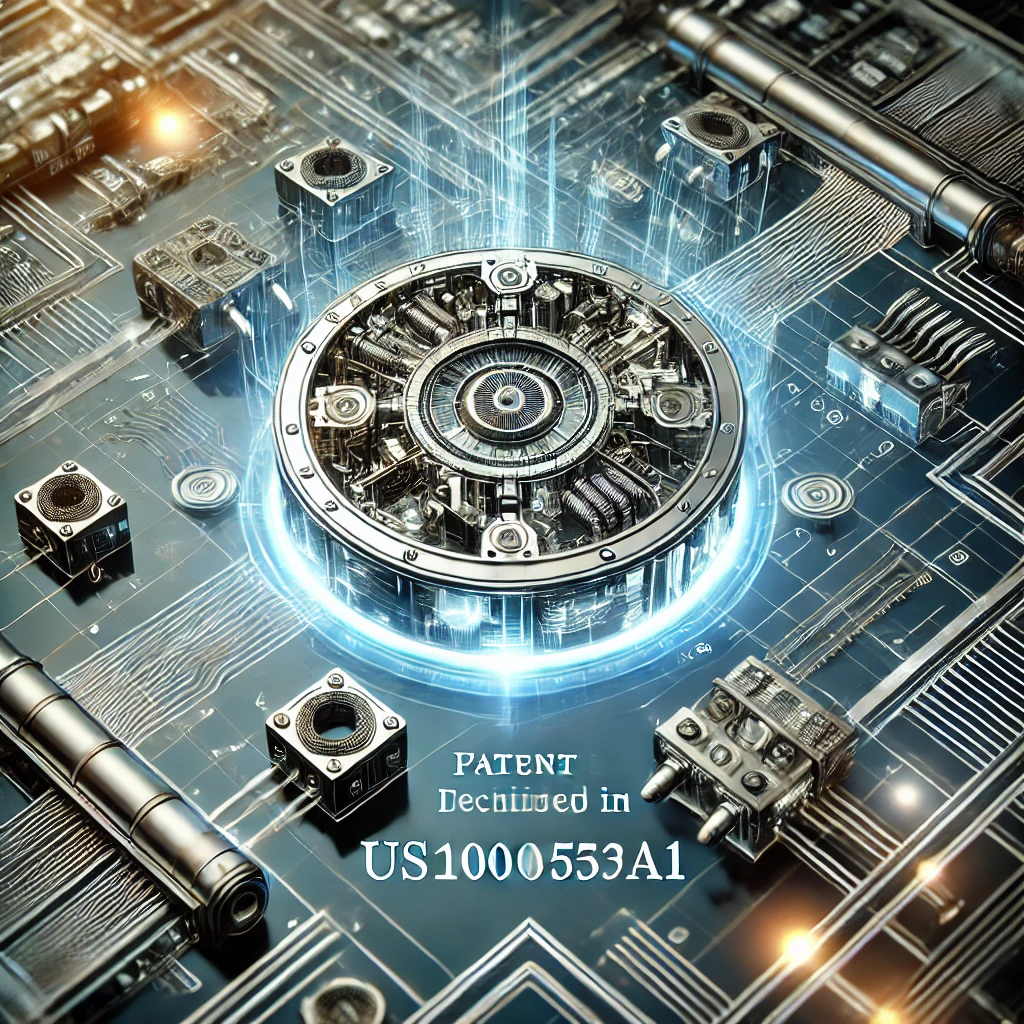Introduction to Patent US20120065539A1
Patent US20120065539A1 is a significant intellectual property document that outlines a unique invention designed to improve or innovate in a specific technological field. This patent represents a groundbreaking step in its area, offering new solutions and setting the stage for future advancements. Understanding this patent’s core ideas is essential for professionals, businesses, and researchers in related industries.
The patent covers an invention that solves particular problems in its domain, providing an innovative approach that was not previously available. Its importance lies not only in the technical solution it offers but also in the legal protection it grants to the inventors, ensuring they can capitalize on their work while preventing unauthorized use by competitors.
Background and Context of the Patent
The development of Patent US20120065539A1 is rooted in a broader historical context of technological innovation. Before this patent was filed, the industry faced limitations that hindered progress. These challenges spurred the need for new solutions, leading to the creation of this patent.
Historically, advancements in the related field were incremental, with existing patents and technologies providing only partial solutions. This invention builds on those previous efforts, offering a more comprehensive and practical approach. Additionally, the patent is part of a broader trend in the industry towards increased automation, efficiency, and innovation.
Detailed Explanation of the Invention
The invention described in Patent US20120065539A1 introduces a novel method or system that addresses specific technical challenges. It comprises several key components, each playing a crucial role in the overall functionality of the invention.
For instance, the patent may detail a new device, software, or process significantly improving efficiency, accuracy, or usability. The invention might also incorporate advanced materials or algorithms previously utilized differently. The core functionality revolves around solving a problem that has long plagued the industry, making the invention practical and valuable.
This patent differs from existing technologies by offering a more streamlined, cost-effective, or user-friendly solution. Its uniqueness is often highlighted through the specific claims made in the patent application, which outline the distinct features that set it apart from other inventions.
Patent Application Process
The process of securing Patent US20120065539A1 involved several critical steps, beginning with the filing of the application. The filing date is a key milestone as it establishes the invention’s priority, ensuring that the inventors are recognized as the original creators.
The application also underwent a thorough examination by a patent examiner, who reviewed the technical and legal aspects to ensure that the invention met all the criteria for patentability. This includes novelty, non-obviousness, and utility. The publication date marks the point at which the patent application became publicly available, allowing others to view the details of the invention.
The inventors and assignees listed on the patent are recognized as the primary contributors to the invention. Their names are crucial in identifying who holds the rights to the patent and who is responsible for its development and potential commercialization.
Claims of Patent US20120065539A1
The claims section of Patent US20120065539A1 is the most essential part of the document. It defines the scope of protection granted by the patent, detailing what is covered by the patent’s legal rights.
Primary claims outline the invention’s broadest aspects, describing the protected essential features. These claims are often drafted to maximize the patent’s coverage, preventing others from creating similar inventions without infringing on the patent.
On the other hand, dependent claims provide additional specificity, detailing particular embodiments or variations of the invention. These claims build on the primary claims, offering more precise protection for specific features or configurations.
Understanding the claims is crucial for anyone looking to work in the same technological field, as they outline what is and isn’t allowed under the patent’s protection.
Technical Specifications and Diagrams
Patent US20120065539A1 includes detailed technical specifications and diagrams that visually represent the invention. These diagrams are essential for understanding the more complex aspects of the invention, offering a clear picture of how the components interact and function together.
Each figure in the diagrams corresponds to a part of the written description, helping to illustrate the invention’s structure and operation. Technical specifications provide precise measurements, materials, and other relevant data crucial for reproducing or understanding the invention.
Including these technical details not only aids in comprehension but also strengthens the patent’s enforceability, as they provide concrete evidence of the invention’s functionality and uniqueness.
Practical Applications of the Patent
Patent US20120065539A1’s practical applications are wide-ranging, with potential impacts across several industries. For example, a patent involving a new software algorithm could be used in fields such as artificial intelligence, data processing, or cybersecurity.
Real-world use cases demonstrate the invention’s value, showing how it can be applied to solve existing problems or improve efficiency in various settings. The patent might be particularly valuable in industries that require high precision, speed, or automation, offering significant advantages over older technologies.
The impact of this invention on technology and society could be profound, leading to new products, services, or even entirely new markets. Depending on the invention’s nature, its applications also extend to consumer products, industrial processes, or healthcare.
Legal Implications and Enforcement
Legal implications are critical to any patent, and US20120065539A1 is no exception. The claims define what is legally protected and what isn’t and determine the scope of protection this patent provides.
Patent enforcement involves monitoring the market for potential infringements and taking legal action against unauthorized use of the patented invention. This can include lawsuits, licensing agreements, or settlements. The legal precedents established by similar patents can also influence how this patent is enforced.
Potential challenges to the patent might arise, including disputes over its validity, scope, or application. These challenges can come from competitors, legal experts, or government entities, making the legal landscape a key consideration for anyone involved with this patent.
Innovations and Improvements Post-Patent Filing
Since the filing of Patent US20120065539A1, there have likely been further innovations and improvements in the field. These could include refinements to the original invention, new applications, or entirely new inventions that build on the foundation laid by this patent.
Subsequent developments also involve enhancements in the technology used in the invention, making it more efficient, cost-effective, or versatile. Innovations inspired by this patent could lead to new patents, creating a chain of technological progress that benefits multiple industries.
Future improvements could focus on addressing the original invention’s limitations, expanding its applicability, or integrating it with emerging technologies.
Commercialization and Market Impact
Commercializing Patent US20120065539A1 involves taking the invention from the conceptual stage to the market. This process can include product development, marketing, and distribution to generate revenue from the invention.
Companies leveraging this patent might integrate the technology into their existing products or create new offerings. Market reception can vary, and the success of commercialization depends on factors such as market demand, competition, and the effectiveness of the technology.
The patent’s economic impact could be significant, particularly if the invention addresses a major market need or offers a substantial improvement over existing solutions. Profitability might be measured in terms of direct sales, licensing agreements, or other revenue streams.
Comparison with Similar Patents
Comparing Patent US20120065539A1 with similar patents is essential to fully understanding its value. This analysis can reveal the patent’s unique features, highlighting its strengths and weaknesses in relation to competing technologies.
Similar patents offer alternative solutions to the same problem with different approaches or technologies. US20120065539A1’s unique selling points include its efficiency, cost-effectiveness, and ease of use, which distinguish it from other patents in the field.
Positioning in the market involves understanding how this patent fits into the broader technological innovation landscape. By comparing it with similar patents, it’s possible to identify its competitive advantages and potential areas for improvement.
Criticisms and Challenges of the Patent
Like any technological innovation, Patent US20120065539A1 has faced its share of criticisms and challenges. These could come from industry experts, competitors, or even within the legal system.
Technical challenges involve the feasibility of implementing the invention in real-world scenarios, while legal challenges include disputes over the patent’s validity or scope. Critics might argue that the patent needs to go further in solving the problem it addresses or that its claims are too broad.
Limitations of the patent include technical constraints, cost considerations, or potential risks associated with the invention. Understanding these challenges is crucial for anyone looking to work with or improve upon the patented technology.
Future Trends and Directions
Emerging trends in technology and industry are likely to shape the future of Patent US20120065539A1. These trends could include advancements in related fields, new applications for the invention, or shifts in market demand.
Predicted advancements involve integrating new materials, software, or processes that enhance the invention’s functionality. Long-term implications for the industry include changes in how similar technologies are developed, patented, and commercialized.
Staying ahead of these trends is essential for anyone involved with this patent, as it can help identify new opportunities for innovation and commercialization.
FAQs about Patent US20120065539A1
Q1: What is the primary purpose of Patent US20120065539A1?
A1: The patent aims to provide a unique solution to a specific technical problem, offering improvements in efficiency, accuracy, or usability.
Q2: Who are the inventors of this patent?
A2: The inventors are listed on the patent document, representing the individuals or teams responsible for developing the invention.
Q3: What industries can benefit from this patent?
A3: Depending on its specific applications, industries such as technology, healthcare, and manufacturing might benefit from the invention.
Q4: How does this patent differ from similar patents?
A4: This patent offers unique features or improvements that set it apart from other patents, providing a more effective solution to the problem it addresses.
Q5: Can this patent be challenged legally?
A5: Like any patent, US20120065539A1 can face legal challenges regarding its validity, scope, or application.
Q6: What are the potential commercial applications of this patent?
A6: The patent could be commercialized in various ways, including product development, licensing, or integration into existing technologies.
Conclusion
Patent US20120065539A1 represents a significant innovation in its field. It offers unique solutions to technical challenges and opens new avenues for research and development. Its impact is felt across multiple industries, with potential applications that extend far beyond its initial scope.
As technology continues to evolve, the importance of this patent will likely grow, influencing future trends and developments. Understanding this patent is essential for anyone working in related fields to stay ahead of the curve and leverage the opp ortunities it presents.





